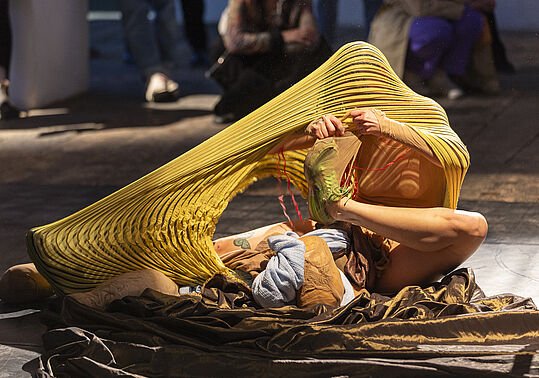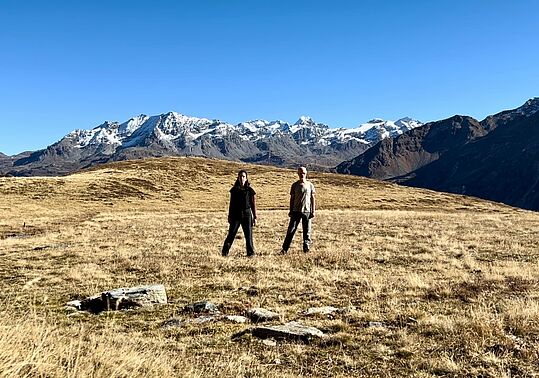
We 17.10.2018 - Fr 19.10.2018
7.30 pm Hrs
€ 16 | 12
Saal
Moritz Majce + Sandra Man: Choros V
Choros is the ancient name for a ritual assembly on the ground. It brought forth the roundel and the choir, the dance floor, and choreography. It refers both to the bodies, their movements, the speaking and singing as well as the site where the participants do all of this. In archaic times a group met at a holy place, uninhabited and uncultivated, danced, sang and spoke, and stomped a round spot in the ground. Choir and roundel were sculptures set in motion, not yet theatre. Around them were spectators, who neither took part nor stared on passively.
Moritz Majce and Sandra Man take the ancient Choros as inspiration to address contemporary issues. They are interested in open zones, that which emerges between exhibition and performance, between watching and participating. The ancient Choros – a forerunner of theatre, protagonists, stage, storyline – delivers content and elements for spaces where bodies, motion, image, and language meet. With their fresh perspective from the outside – Moritz Majce is originally a visual artist and Sandra Man an author – they declare choreography a three-dimensional art form. They develop a genre in which the presence of bodies converges with the projection of image and language scapes. The ancient Choros is a sculpture set in motion; and spatial choreography – as they call their working method – is installation set in motion.
For Choros, they take certain elements – floor, circle, group – and transform them. The sacred ground dissolves into a multitude of floors, one circle multiplies into several interfering ones, the assembly oscillates between collective and ego. On various dance floors (meadow, trampoline, carpet, platform) emerge roundels of images, bodies, voices. They range from circling around oneself to forming a circle with others and finally to large cosmic orbits. Six performers wander from one floor to the next and activate it. Each station is independent and draws its own circles upon which expand while the chorus creates paths from one station to the other. The visitors can come along or stay where they are. One is – walks, stands, sits, lies – in a landscape marked by the perpetual traces left by the performance. Choros is neither a performance vis-à-vis an audience nor an exhibition around them. The question of how precisely to view Choros and participate is part of the work. It is an invitation for visitors to explore the space, change perspectives, get to know the surroundings. Despite the simultaneity and juxtaposition of events, nothing is missed. Choros is a greater cycle of recurring events. The varying time lines and places result in different viewpoints and associations.








